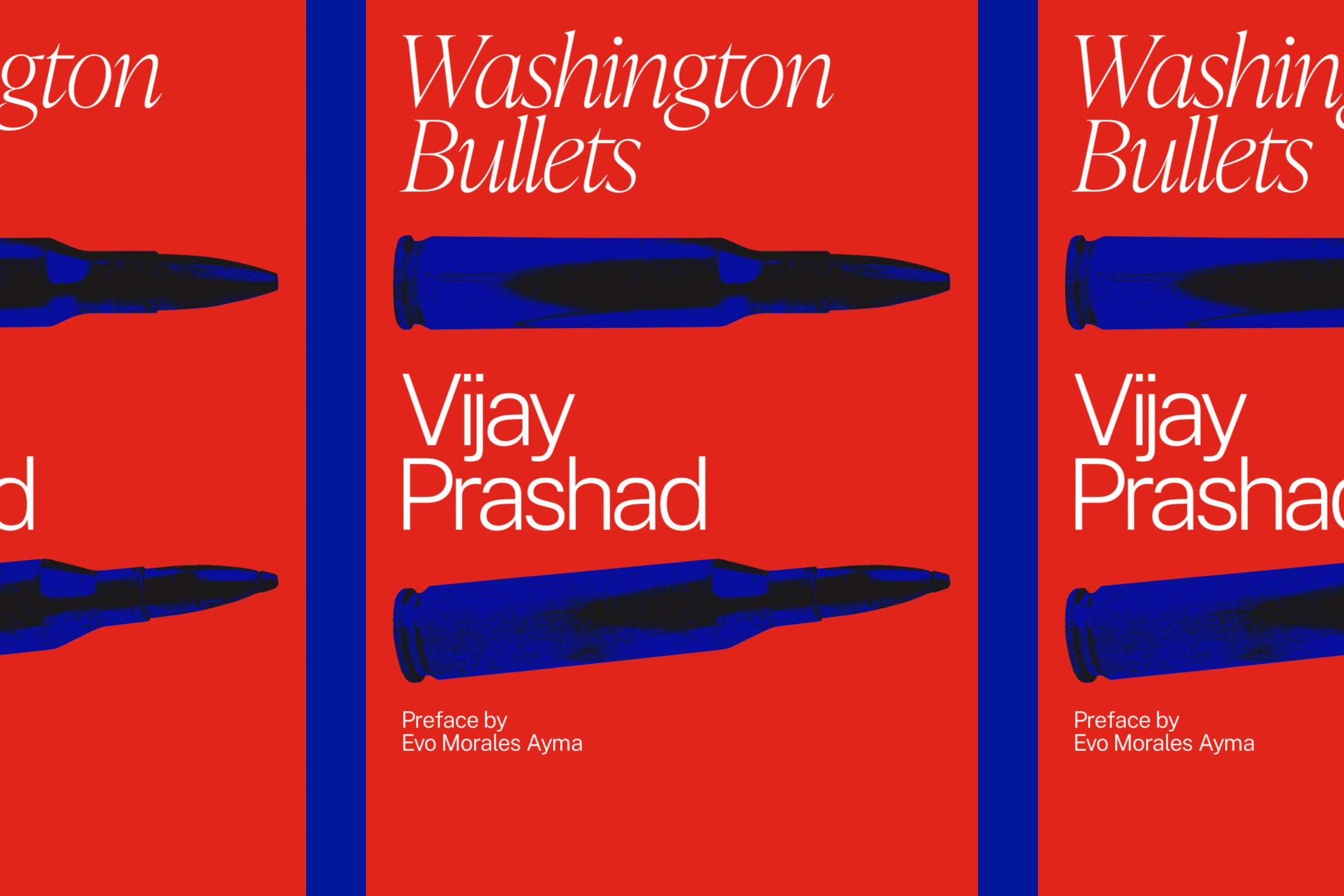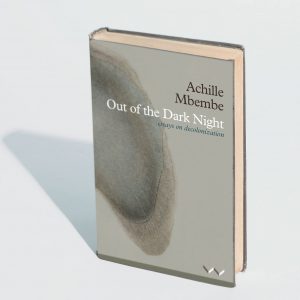New Books | Washington Bullets
The so-called peace-loving nations that signed the 1919 League of Nations Covenant were the same ones that oppressed the colonised world and eventually dropped an atomic bomb on Japan.
Author:
28 March 2022

This is a lightly edited excerpt from Washington Bullets (Inkani, 2022) by Vijay Prashad.
Divine right
Divine right is an old, established principle. It means that kings have the right – ordained by God – to act in any way that they wish. Human-made laws are of no consequence beside the awesome power of God, and God’s representative, namely the monarch.
In Delhi, towards the end of the 16th century, the Mughal Emperor Akbar began to have doubts about the idea of divine right. He established a translation bureau (maktab khana), where he asked intellectuals to read deeply into all religious traditions. “The pillars of blind following were demolished,” wrote Akbar’s biographer Abu’l Fazl. “A new era of research and enquiry into religious matters commenced.” Part of the emergence of a non-religious idea of sovereignty was the sense that the Emperor had to rule for the people, not based on his own God-given right. “Tyranny is unlawful in everyone, especially in a sovereign who is the guardian of the world,” wrote Abu’l Fazl in Ain-i-Akbari (1590).
Related article:
Nine years later, the Spanish historian Juan de Mariana wrote De rege et regis institutione (1598), which made the case that the people – he meant mainly the nobles – “are able to call a king to account”.
Abu’l Fazl and de Mariana had sniffed the mood. Peasant rebellions had their impact. Their pitchforks were sharp; their anger a tidal wave. Sovereignty gradually went from God and King to People. A generation later, Louis XIV of France said – L’État c’est moi, the state is me. His descendants would be guillotined.
Preponderant power
On 6 August 1945, the United States military dropped a bomb that contained 64kg of uranium-235 over the city of Hiroshima (Japan). The bomb took just over 44 seconds to fall from 9 400 metres and detonated 580 metres above the Shima Surgical Clinic. Over 80 000 people died instantly. This was the first use of the nuclear bomb.
Four days later, Satsuo Nakata brought the Domei New Agency’s Leica camera to the city. He took 32 photographs of the devastation; each of these pictures – archived in the Hiroshima Peace Memorial Museum – is iconic. The force of the bomb flattened the city, even though less than two percent of the uranium detonated. Nakata took a picture of the office of the newspaper Chugoku Shimbun and of the Odamasa kimono store. The store’s metal twisted into a whirlwind. It is a sign of the power of this weapon. As Sankichi Toge, a hibakusha (survivor of the atom bomb) and poet, wrote of that power and its impact, as the fires burnt down from the bomb’s power in a city of 350 000 : “the only sound – the wings of flies buzzing around metal basins”.
Between 1944 and 1946, Paul Nitze had been the director and then vice chairperson of the US government’s Strategic Bombing Survey. He began this work in Europe, but then went to Japan shortly after the war ended. Nitze later said that he had believed that the war would have been won “even without the atomic bomb”. This is the thesis he hoped to prove during his time in Japan. The destruction he saw was breathtaking; it resembled the European cities that had faced conventional bombardment. As his biographer Strobe Talbott wrote, Nitze “believed that the measurements of the Survey at Hiroshima and Nagasaki showed the effects to be roughly the equivalent of an incendiary bombing raid”.
Related article:
The Japanese generals and businessmen he interviewed told him that they would eventually have surrendered but that the atom bomb certainly made further war impossible. In November 1945, Nitze met Baron Hiranuma Kiichiro, the president of the Privy Council. On 26 July 1945, the United States, the United Kingdom and China issued the Potsdam Declaration that called on Japan to surrender or else it would face “prompt and utter destruction”. Kiichiro said he was moved by this threat to urge his fellow members of the Privy Council to surrender. He failed to carry the day. A week later, on 6 and 9 August, the US dropped the bombs on Hiroshima and Nagasaki. Japan’s Emperor Hirohito surrendered on 15 August. Kiichiro told Nitze that the “biggest factor” for the Japanese surrender was “the atomic bomb”. The country, he said, “was faced with terrible destructive powers and Japan’s ability to wage war was really at an end”.
The immense authority of the atomic bomb had an impact on the Washington bureaucrats, even those who might have felt uneasy about its use. Nitze was one of them. He would have preferred that the atomic bomb not be used; but once used, saw its utility. It is why he would urge the US government to expand its massive arsenal. The point would not be to actually attack the USSR, but to ensure that the USSR was – as the US diplomat George F Kennan said – contained, and then eventually rolled back. Nitze, more than Kennan, would shape US foreign policy for decades. With his team at the US State Department in 1952, Nitze formulated the clear objective of US power after World War II. The liberals in the US government, he said, tend to “underestimate US capabilities”; he did not, since he had seen it as part of the Strategic Bombing Survey. He introduced a word – preponderant – that would become part of the formula of US policy planners. “To seek less than preponderant power would be to opt for defeat,” Nitze’s staff wrote in 1952. “Preponderant power must be the objective of US policy.”
The word “preponderant” comes from Latin. It means “to weigh more”. The king is always worth his weight in gold. Now the United States claims the scale, its weight bolstered by the payloads dropped over Hiroshima and Nagasaki.
Trusteeship
Old colonial masters liked to think that they were directed by God to bring peace and civilisation to the world. That idea of the coloniser as the peacemaker and the lawgiver shuffled into the grand discourses of modern international law. Natives were fractious, unable to be governed by reason; they needed their masters to help them, to be their trustees. The League of Nations Covenant (1919) assembled the lands of the natives into “trusteeships”, so that their masters could believe that their domination was sanctified by law. It was in Article 16 of the Covenant that the “peace-loving nations” – namely the imperialists – said that they had the “obligation” to maintain peace and security.
European hypocrisy over terms like “peace” was by then clear to the colonised world. The League of Nations Covenant was signed on 28 June 1919. A few months earlier, on 13 April 1919, British troops conducted a massacre in Jallianwala Bagh (Amritsar, India), where a mass meeting was being held in opposition to the authoritarian Defence of India Act of 1915. As many as a thousand people were killed on that one day. They were holding a peaceful meeting. The “peace-loving nations” murdered them. This was despite the fact that “India” was a member of the League. Well, as the Indian papers – such as Rajkaran (November 1919) – understood immediately, “England secured a vote for India on the League of Nations in order to be able to command a larger number of votes.” There was no benefit for India “in any way”.
The United States signed the Covenant. So did Nicaragua and Haiti. In 1909, the US had intervened in Nicaragua to overthrow President José Santos Zelaya who had ambitions of creating a Federal Republic of Central America. Such a project of regional unity was unacceptable to the US, which wanted to carve out a canal through Nicaragua to unite the two oceans (when the US turned its attention to Panama, Zelaya asked the Germans if they would be interested in a canal; this was a fatal error for him). The departure of Zelaya opened up space in Nicaragua for nationalists, including in the military. When they rose up in the Mena Rebellion in 1912, the US marines returned – and remained until 1933.
Related article:
Haiti, which, like Nicaragua, was in the League of Nations, saw its people rise up against the pro-US dictator Jean Vilbrun Guillaume Sam in 1915, whose death in the streets of Port-au-Prince gave the US the excuse to send in the marines; they remained in Haiti till 1934. Fifteen thousand to 30 000 Haitians died in the repression, though this did not stop a peasant rebellion in 1919-1920 and a series of strikes in 1929. The leader of part of this unrest – Charlemagne Masséna Péralte (1886–1919) – and his band of cacos fought to defend the Haitian people’s rights. He was shot in the heart by a US marine. Péralte was Haiti’s Sandino, the Nicaraguan revolutionary who met a similar fate in 1934. Every institution in Haiti was hollowed out, their functions subordinated to the United States.
A “peace-loving nation” invaded two other members of the League in the name of peace. But these exceptions were already baked into the Covenant. It said quite clearly, “Nothing in this Covenant shall be deemed to affect the validity of international engagements, such as … regional understandings like the Monroe Doctrine, for securing the maintenance of peace.” The Monroe Doctrine of 1823, which the US understood as its right to the hemisphere, was quite legal since it allowed the imperialists a right to its dominions.
Japan’s representative to the League of Nations meeting was Baron Makino Nobuaki. His speech at the Versailles conference – tinged with naiveté – put forward a “proposal to abolish racial discrimination”. Nobuaki’s brief was narrow, as made clear by Foreign Minister Viscount Uchida Yasuya; this proposal would only apply to the members of the League of Nations, and not to the colonised territories. But even this principle was too much. Australia had officially adopted a White Australia Policy in 1901. Its Prime Minister William Morris Hughes would not tolerate such a proposal at the League. Both Britain and the United States of America agreed. The Japanese proposal fell by the wayside. Baron Nobuaki returned home furious; he was a patron of the ultra-nationalist groups whose role drove Japan towards its wars of aggression in Asia.



